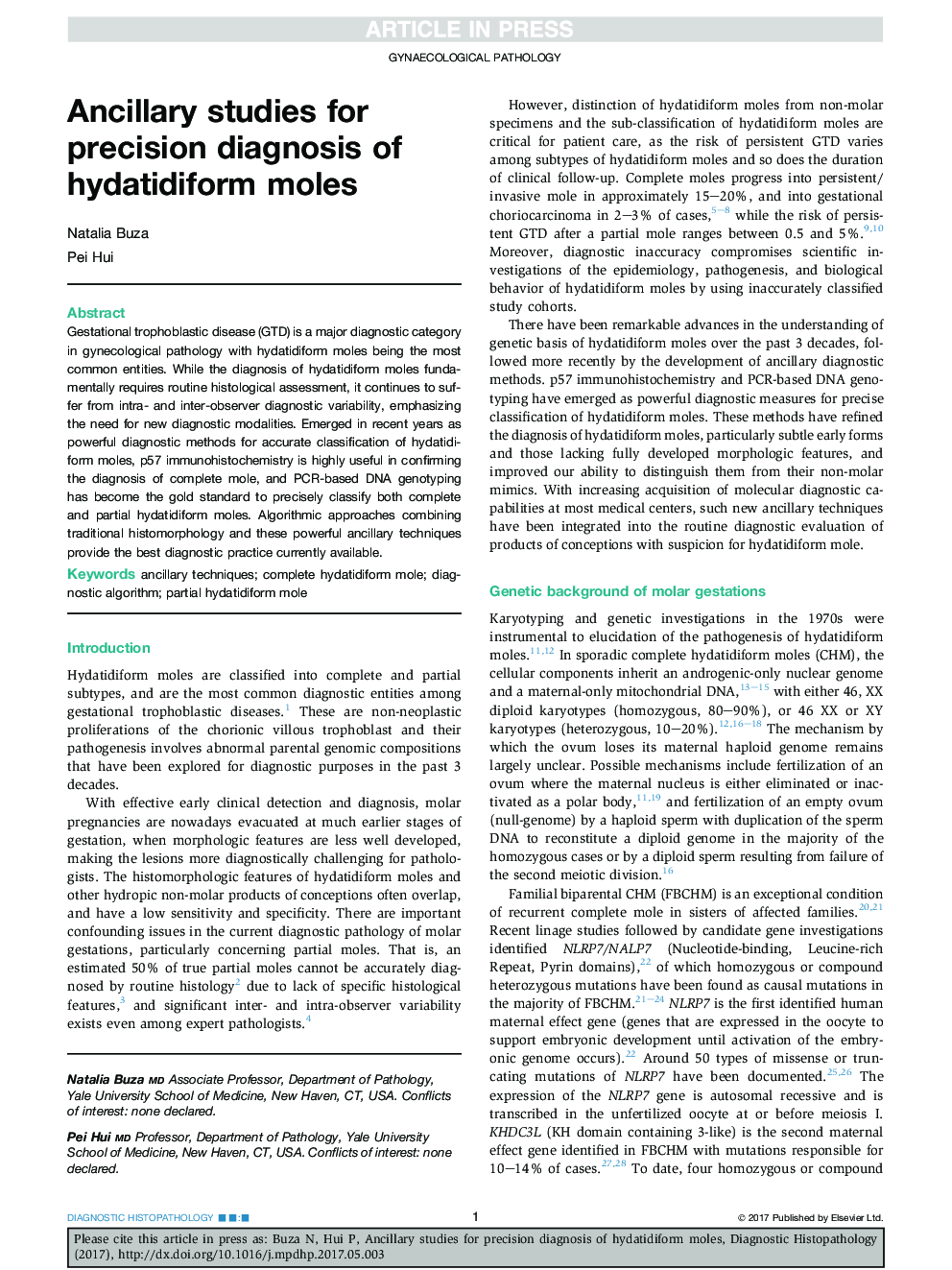| Article ID | Journal | Published Year | Pages | File Type |
|---|---|---|---|---|
| 5716018 | Diagnostic Histopathology | 2017 | 11 Pages |
Abstract
Gestational trophoblastic disease (GTD) is a major diagnostic category in gynecological pathology with hydatidiform moles being the most common entities. While the diagnosis of hydatidiform moles fundamentally requires routine histological assessment, it continues to suffer from intra- and inter-observer diagnostic variability, emphasizing the need for new diagnostic modalities. Emerged in recent years as powerful diagnostic methods for accurate classification of hydatidiform moles, p57 immunohistochemistry is highly useful in confirming the diagnosis of complete mole, and PCR-based DNA genotyping has become the gold standard to precisely classify both complete and partial hydatidiform moles. Algorithmic approaches combining traditional histomorphology and these powerful ancillary techniques provide the best diagnostic practice currently available.
Keywords
Related Topics
Health Sciences
Medicine and Dentistry
Pathology and Medical Technology
Authors
Natalia Buza, Pei Hui,
